TELESCOPES
Thousands of telescopes all over the world, large and small, on Earth and in space, are involved in exoplanet exploration. Here, we highlight some of the small, ground-based facilities that have discovered the transiting Hot Jupiters that DIY Planet Search observes, and some of the satellite telescopes that NASA and other space agencies have launched to further exoplanet investigations.
1. TrES: Transatlantic Exoplanet Survey
DIY Target Star Systems: TrES1, TrES2, TrES3, TrES5 • Location: Flagstaff, Arizona; San Diego, California; and Canary Islands, Spain
The Transatlantic Exoplanet Survey, or TrES, uses three 4inch telescopes to discover exoplanets using the transit method. Just like MicroObservatory, the telescopes are relatively small and remotely controlled. The telescopes are located at Lowell Observatory in Arizona, Palomar Observatory in California, and the Canary Islands. To date, five planets (TrES 1, 2, 3, 4, and 5) have been discovered by a group of astronomers using the telescopes. Visit this archive of the TrES Project.
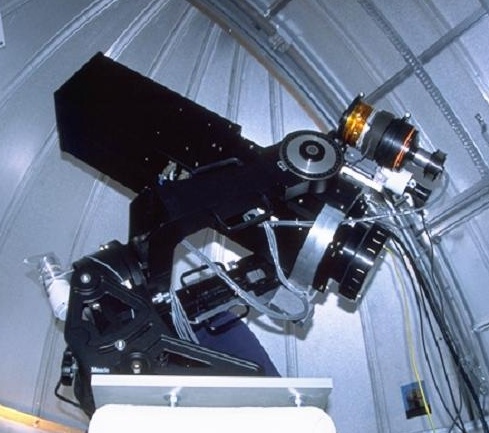
- go to top -
2. Wide Angle Search for Planets - WASP
DIY Target Star Systems: WASP1 (also called Garafia1), WASP2, WASP10, WASP12, WASP25, WASP35, WASP36, WASP39, WASP43, WASP49, WASP50, WASP52, WASP77 • Location: La Palma, Spain; Sutherland, South Africa • Operated by: Keele University, The University of Warwick • First Data: 2006
The WASP project is a partnership among a group of eight institutions in the United Kingdom. Two robotic observatories, each with eight wide-angle cameras, operate continuously searching the sky for transiting planets. Each camera can capture up to 100,000 stars per image! SuperWASP-North is located on the island of La Palma and covers the northern hemisphere. The skies of the southern hemisphere are monitored by SuperWASP-South in Sutherland, South Africa. Each telescope produces over 50 GB of data per night, which are automatically analyzed by custom software to try to detect transiting exoplanets. The WASP project is one of the most successful searches for transiting exoplanets, only second to the Kepler Mission in confirmed exoplanet discoveries, having found over 100 planets! Visit the WASP Website.
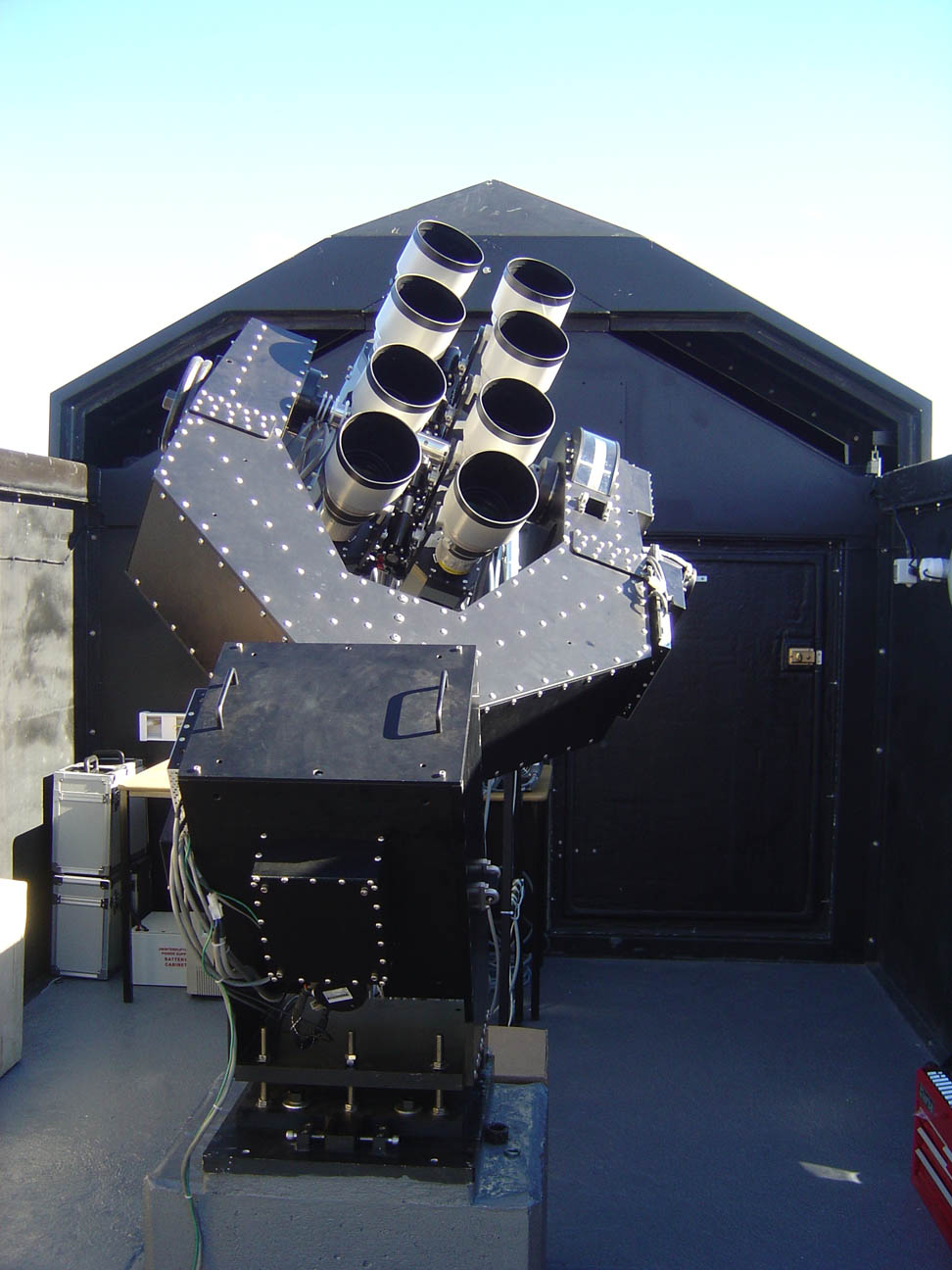
- go to top -
3. HATNet - Hungarian Automated Telescope Network
DIY Target Star Systems: HATP-3, HATP-10, HATP-12, HATP-19, HATP-20, HATP-25, HATP-31, HATP-36 • Location: Amado, Arizona; Mauna Kea, Hawaii • Operated by: Princeton University • First Data: 2001
This telescope network was originally formed by a group of Hungarian scientists in 1999. Its purpose was to map bright variable stars. Today the network's mission is to detect transiting planets using six small telescopes located in Arizona and Hawaii. HATNet has discovered 56 exoplanets to date. Visit the HATP website.
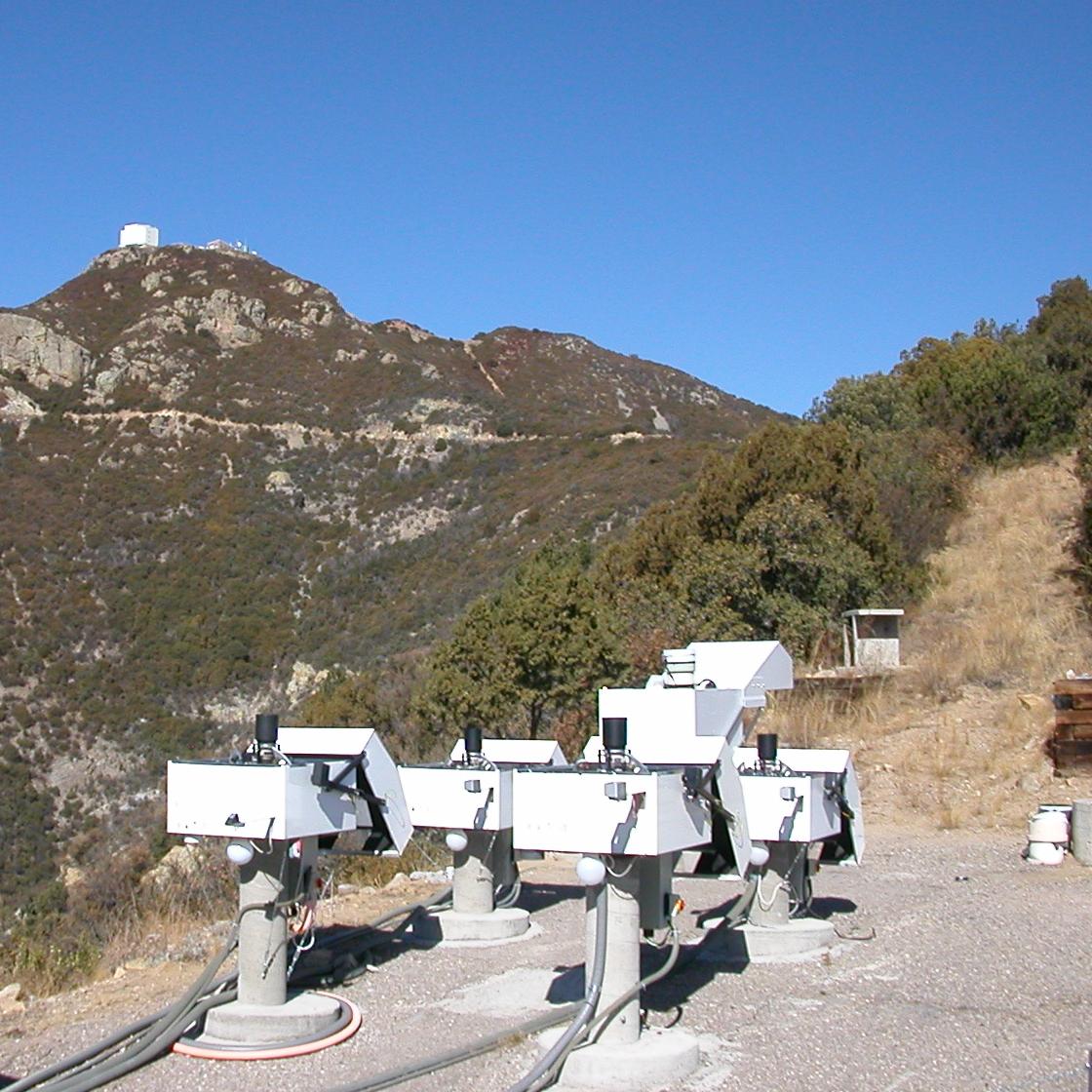
- go to top -
4. Qatar
DIY Target Star Systems: QATAR-1, QATAR-2 • Location: New Mexico • First Data: 2010
The Qatar Exoplanet Survey uses ground-based, wide-field digital cameras at a location in New Mexico to image the sky every clear evening, looking for transiting exoplanets. Just like MicroObservatory, the telescopes are relatively small and robotically controlled. The survey began in early 2010. The telescopes use an array of five lenses and high resolution CCDs to image the sky from New Mexico, before sending the data to the University of St. Andrews to be processed. It’s then archived at the University of Leicester. Visit the Qatar Website.
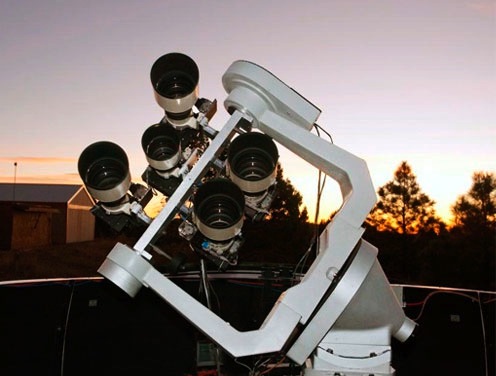
- go to top -
5. MEarth
Location: Amado, Arizona; Cerro Tololo, Chile • Operated by: Center for Astrophysics | Harvard & Smithsonian • First Data: 2008
Like MicroObservatory, the MEarth Project uses robotic telescopes operated at the Center for Astrophysics in Cambridge, MA. For the first six years, the MEarth project consisted of eight identical telescopes each with a 16’’ primary mirror all located in Arizona. To open up the southern hemisphere to their search, the MEarth project added a second set of robotic telescopes nearly identical to those in Arizona to Cerro Tololo, Chile in 2014. The telescopes are used to study nearby M dwarf stars in search of Earth-like exoplanets, and can take hundreds of observations each night without any human intervention. Visit the MEarth Website.
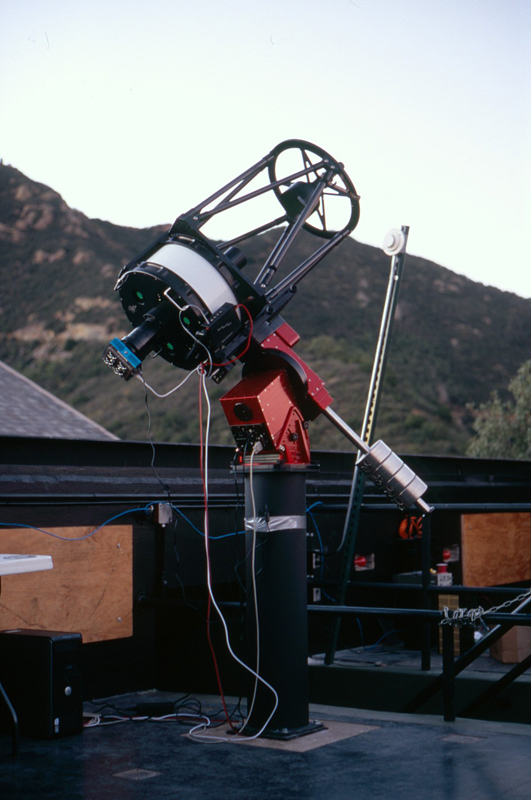
- go to top -
1. TESS: Transiting Exoplanet Survey Satellite
Launched: April 18, 2018 • Location: High Earth orbit • Operated by: Massachusetts Institute of Technology
The Transiting Exoplanet Survey Satellite (TESS) is a space telescope designed at the Kavli Institute for Astrophysics and Space Research at the Massachusetts Institute of Technology (MKI) with significant participation by Center for Astrophysics | Harvard-Smithsonian organizing the science operations.
The primary mission goal is to make an all-sky survey of the nearest and brightest stars in our sky, searching for transiting exoplanets ranging from Earth-sized to gas giants.
The mission orbit allows 85% of the total sky to be observed, starting in the southern sky for 1 year then the northern sky the next year. The sky is divided into 26 sections, each being observed for 27.4-days straight. Approximately 200,000 stars will be analyzed, including the 1000 closest red M dwarfs. As of 10 May 2020, TESS has identified 1835 candidate exoplanets, of which 46 have been confirmed so far. Visit the TESS Website.
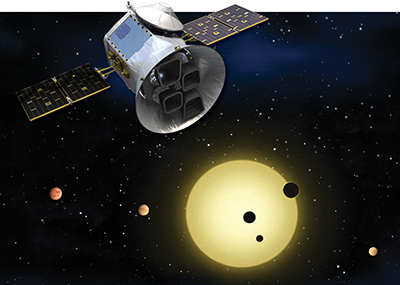
- go to top -
2. Hubble Space Telescope
Launched: April 24, 1990 • Location: Low Earth Orbit • Operated by: NASA
The Hubble Space Telescope is 2.4-meter aperture telescope and four main instruments observe light in the near ultraviolet, visible, and near infrared. Hubble's orbit outside the distortion of Earth's atmosphere allows it to take extremely high-resolution images with almost no background light.
Hubble has been used to confirm the existence of exoplanets, but has been essential in detecting and characterizing exoplanet atmospheres. The Hubble spectrograph measures changes in the color of light from the planet before, during and after a pass behind its host star. Discovering water vapor, carbon dioxide, and methane in the exoplanet atmosphere, including those orbiting in the "habitable zone". In few cases, Hubble has been able to capture direct-images of the planets themselves. Visit the Hubble Website.
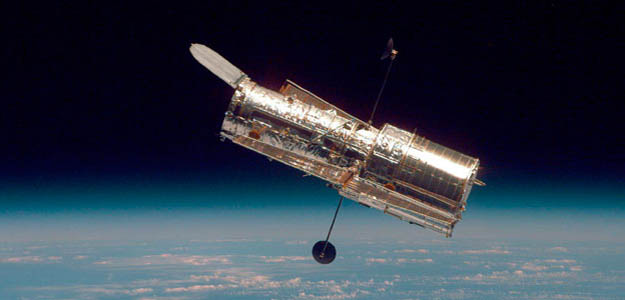
- go to top -
3. James Webb Space Telescope
Launched: Set for 2021 • Location: L2 Halo-orbit (outside of Moon’s orbit) • Operated by: NASA
The James Webb Space Telescope will be a large infrared telescope with a 6.5-meter primary mirror. NASA has set the launch of the telescope for October, 2021. It will study every phase in the history of our Universe, ranging from the first moments after the Big Bang to the evolution of our own Solar System. Astronomers will also use the telescope to study the formation of stars and planets, including direct imaging of exoplanets and spectroscopic observations of planetary transits to study atmospheres of exoplanets. Over 50% of its first year, Cycle 1 scheduled observing time will be used to characterize exoplanets and their atmospheres. Visit the James Webb Space Telescope Website.

- go to top -
4. CoRot - Convection Rotation and Planetary Transits
Launched: December 27, 2006 • Location: Low Earth Orbit • DIY Target Star Systems: CoRoT-2 • Operated by: CNES/ESA
The CoRoT space telescope, operated by the French space agency CNES, was launched in December, 2006 and retired on 24 June 2013. The telescope observed around 80,000 stars a year. CoRoT was the first spacecraft dedicated to the search for transiting exoplanets. Each star's light curve was recorded for 20 to 150 days as scientists searched for planets orbiting these stars. During its mission CoRoT discovered 33 exoplanets and observed hundreds of candidate exoplanets not yet confirmed. The mission made numerous advances in asteroseismology, the science of measuring solar-like oscillations. Visit the COROT Website.
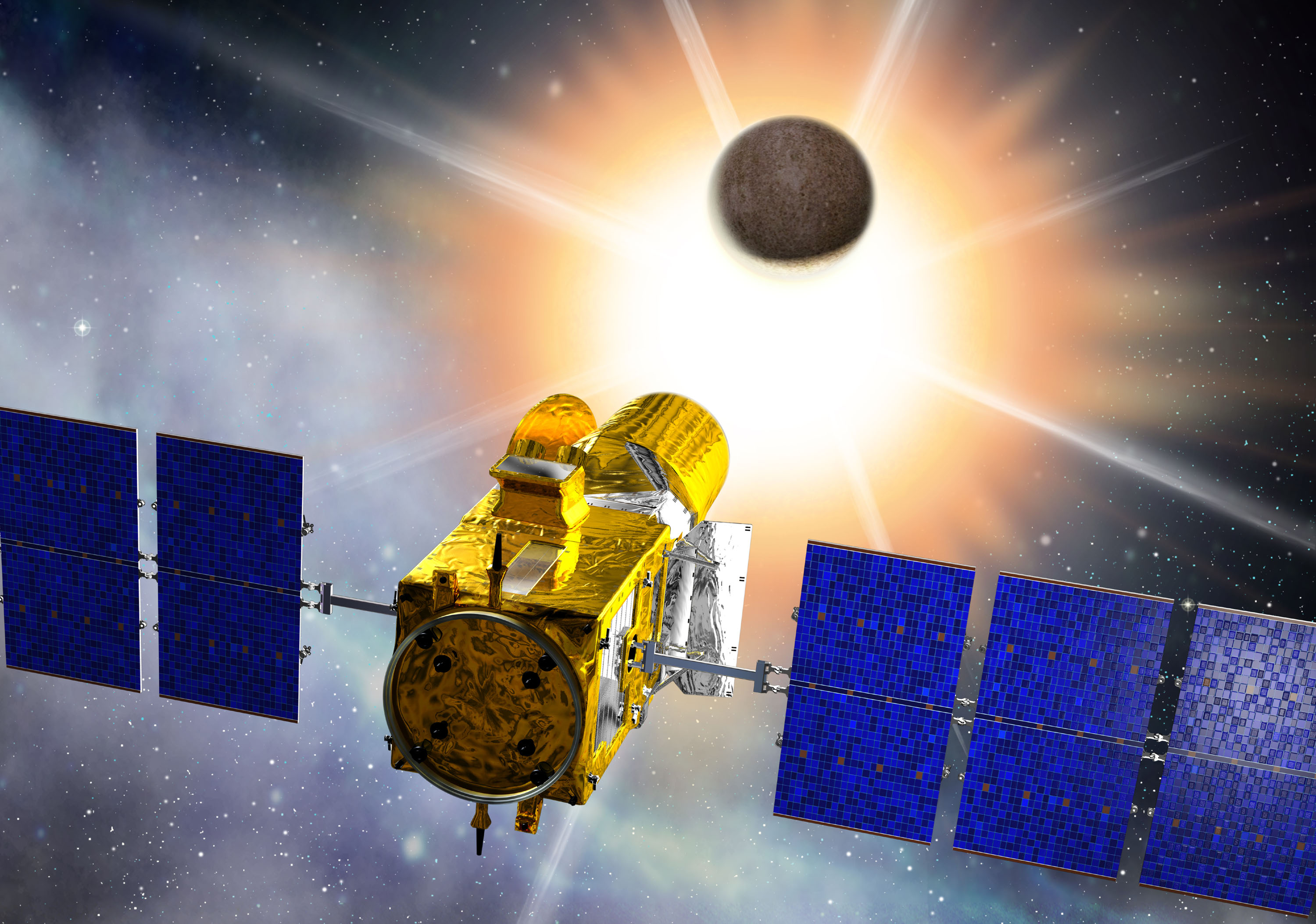
- go to top -
5. Kepler Space Telescope
Launched: March 7, 2009 • Location: Earth-trailing solar orbit • DIY Target Star Systems: Kepler-1 (TrES-2) • Operated by: NASA
The Kepler Space Telescope was launched by NASA in 2009 to discover many Earth-like planets in a small section of the sky near the constellation of Cygnus. Kepler continually monitored the brightness of over 145,000 stars, using the transit method to detect exoplanets.
The mission discovered 2,351 planets, and another 397 planets during an extended mission called K2, for a total of 2748 new exoplanets. Another 3307 planet candidates are yet to be confirmed. In January of 2013, astronomers at the Harvard-Smithsonian Center for Astrophysics used Kepler's data to estimate there are at least 17 billion Earth-sized exoplanets in the Milky Way Galaxy! In October 2018, the mission came to an end when the spacecraft’s guidance system failed. Although Kepler's initial mission has come to a close, data it has returned to the Earth is still being analyzed! Visit the Kepler Website.
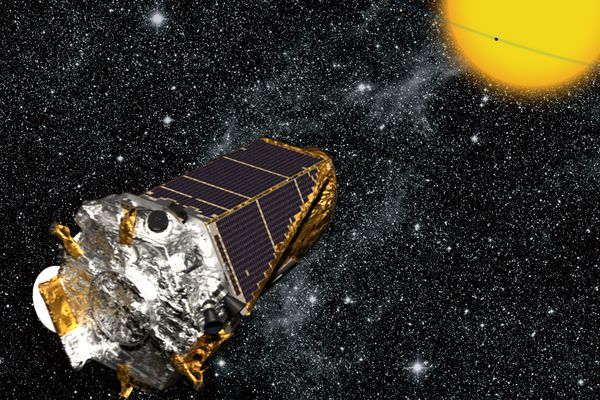
- go to top -
6. Spitzer Space Telescope
Launched: August 25, 2003 • Location: Earth-trailing solar orbit • Operated by: NASA
Designed to observe objects in infrared light, Spitzer has proven to be a revolutionary tool in the characterization of exoplanets. The mission is the first instrument to directly detect light from an exoplanet. The telescope’s data analysis has revealed the composition, temperature, and general wind patterns on faraway exoplanets. It has mapped the temperature emissions from the surfaces of several exoplanets. The spacecraft was retired on 30 January 2020, after 17 years of observing service. Visit the Spitzer Website.
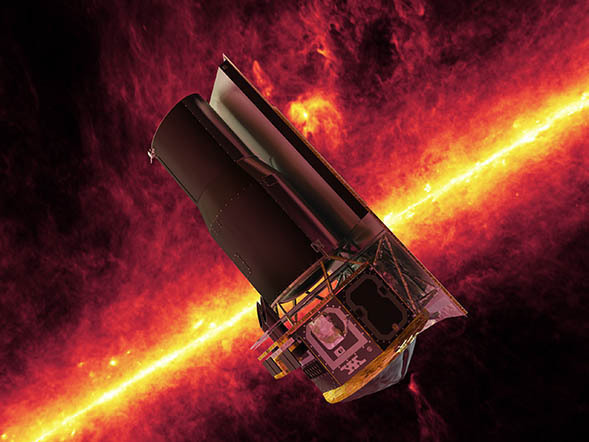
- go to top -